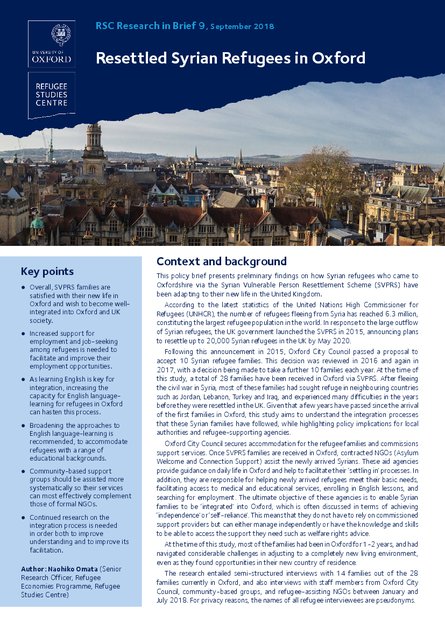
This research brief presents preliminary findings on how Syrian refugees who came to Oxfordshire via the Syrian Vulnerable Person Resettlement Scheme (SVPRS) have been adapting to their new life in the United Kingdom. According to the latest statistics of the United Nations High Commissioner for Refugees (UNHCR), the number of refugees fleeing from Syria has reached 6.3 million, constituting the largest refugee population in the world. In response to the large outflow of Syrian refugees, the UK government launched the SVPRS in 2015, announcing plans to resettle up to 20,000 Syrian refugees in the UK by May 2020. Following this announcement in 2015, Oxford City Council passed a proposal to accept 10 Syrian refugee families. This decision was reviewed in 2016 and again in 2017, with a decision being made to take a further 10 families each year. At the time of this study, a total of 28 families have been received in Oxford via SVPRS. After fleeing the civil war in Syria, most of these families had sought refuge in neighbouring countries such as Jordan, Lebanon, Turkey and Iraq, and experienced many difficulties in the years before they were resettled in the UK. Given that a few years have passed since the arrival of the first families in Oxford, this study aims to understand the integration processes that these Syrian families have followed, while highlighting policy implications for local authorities and refugee-supporting agencies.